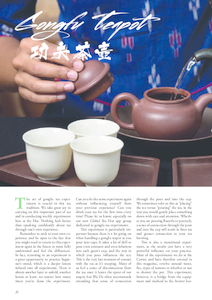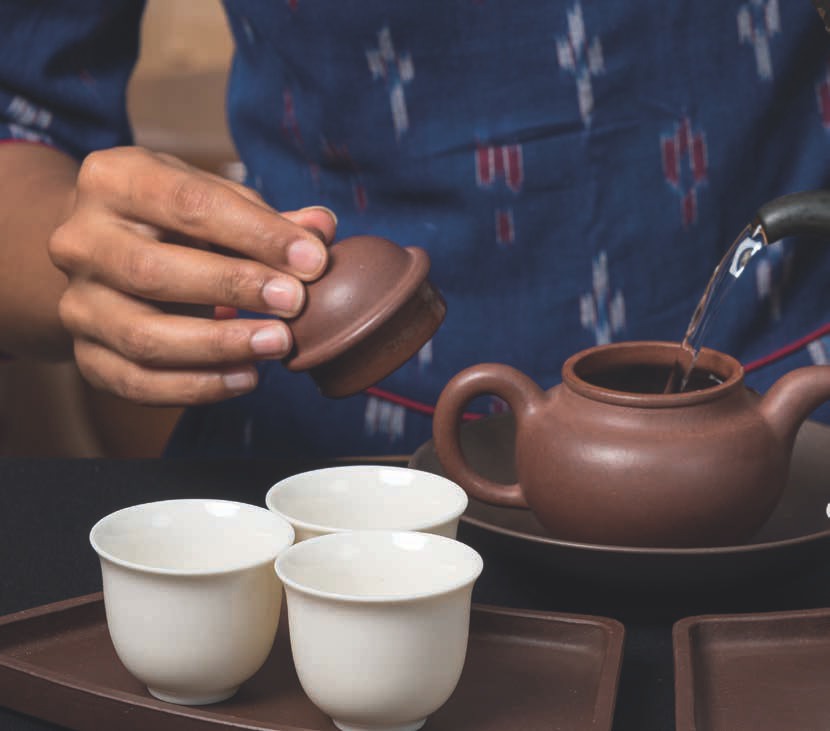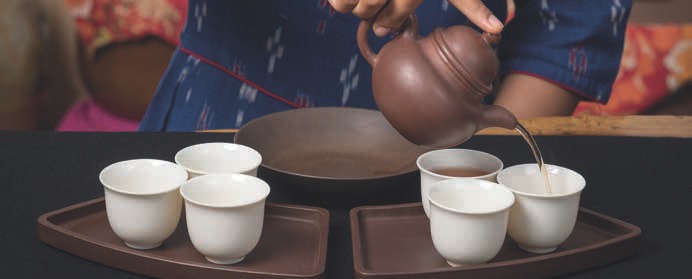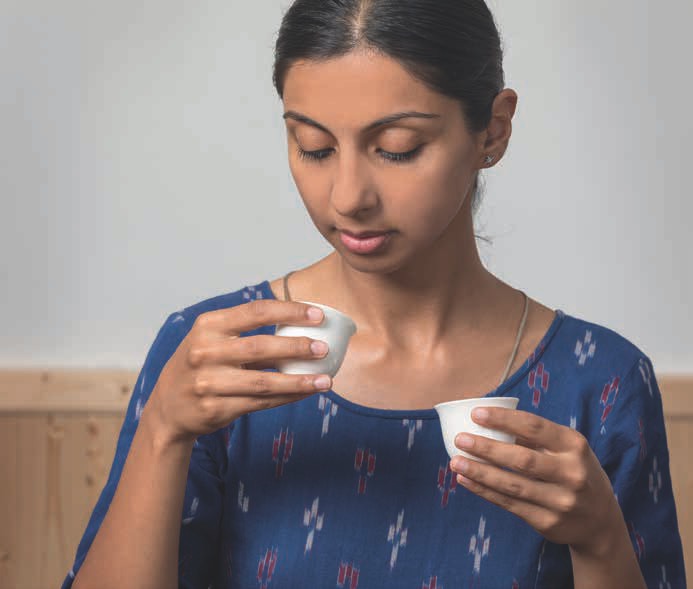
 |
|

The art of gongfu tea experiments is crucial in this tea tradition. We take great joy in carrying on this important part of tea and in conducting weekly experiments here at the Hut. Nothing feels better than speaking confidently about tea through one's own experience.
Remember to stick to your own experience and be open to the fact that you might need to return to this experiment again in the future to more fully understand and feel the differences. In fact, returning to an experiment is a great opportunity to practice beginner's mind, which is a deeper lesson infused into all experiments. There is always another layer to unfold, another lesson to learn, no matter how many times you've done the experiment. Can you do the same experiment again without influencing yourself from your previous experience? Can you drink your tea for the first time every time? Please let us know, especially on our new Global Tea Hut app group dedicated to gongfu tea experiments.
This experiment is particulary important because there is a lot going on when handling a gongfu teapot as you pour into cups. It takes a lot of skill to pour even amounts and even infusions into each guest's cup, and the way in which you pour influences the tea. This is the very last moment of contact with the tea as it's steeping. Many of us feel a sense of disconnection from the tea once it leaves the spout of our teapot, but Wu De often recommends extending that sense of connection through the pour and into the cup. We sometimes refer to this as "placing" the tea versus "pouring" the tea, in the way you would gently place something down with care and attention. Whether you are pouring fluently or precisely, a sense of connection through the pour and into the cup will result in finer tea and greater connection to your tea brewing.
This is also a transitional experiment, as the results can have a very powerful influence on your practice. Most of the experiments we do at the Center, and have therefore covered in this magazine, revolve around water, fire, types of teaware or whether or not to shower the pot. This experiment, however, is a bridge from the equipment and method to the brewer herself. The heart/mind shift when you focus on pouring very precisely without spilling a drop versus pouring fluently and smoothly without hesitation. If we can then experience the difference this has on the cup of tea before us, new and powerful insights arise. We begin to realize that the brewer has a tremendous effect on the tea, just as two different musicians would play the same sheet music in a completely different way, even on the same instrument.

It is a subtle shift to start noticing the way my movements affect the physical constitution on tea liquor. Through this change, I begin to cultivate myself, in order to make tea, recognizing that my posture and body mechanics do, in fact, influence the tea I prepare. And in order to change these, I will have to change my lifestyle. Diet, exercise, meditation and all other aspects of life shape my body mechanics, and therefore, my tea. At this point, my tea starts to really become a way of life.
There is something life-changing about the relationship between the pour and the tea liquor that we serve, because through this experience, I start to question which other movements affect my tea. Does the placement of my elbow matter? How about my shoulders?
This experiment also highlights the importance of teapot design. A well-designed teapot shares a balance of aesthetics and function. A good teapot should fit comfortably and confidently into your hand. It almost "clicks" into place when you pick it up. If your teapot is awkward to use and doesn't function well, then consider the last thing on your mind as you struggle to pour properly and how that influences your tea. Some brewing vessels are designed so poorly that they are painful to handle, because they get too hot, and then pain is in the last part of your hand touching the pot as you pour. Whether pouring precisely or fluently, use a teapot that functions well.
Some teapots encourage either precise or fluent pouring. If they have an elongated spout that is well designed, they will pour more precisely, while pots with more open spouts, like canon spouts for example, will be easier to pour fluently. Doing this experiment may also reveal aspects of your pot.
For these gongfu experiments, remember to use a simple tea that you are familiar with and brew it lighter than you normally would. This is conducive to noticing any differences from cup to cup, whereas using a strong, rich and dark tea will only complicate your experience. Also, make sure that your gongfu teapot is authentic zisha or purple-sand clay; otherwise, the subtle differences will get lost in the poor quality of a fake or cheap pot. This experiment is simple but subtle. It is to determine the difference between pouring fluently and precisely from the teapot into your cups.
Pouring fluently means a continual pour from cup to cup without breaking the pour, gracefully filling each cup equally. Your cups should be placed together on a flat tray in a square or triangular shape (unless you only have two), so pouring fluently should be done in a counterclockwise, circular fashion, assuming you are holding the gongfu pot in your right hand.
Pouring precisely means breaking the pour between each cup, making sure not to spill, and placing the pour as precisely as possible, going back and forth between all the cups and filling them equally. For both methods, each cup should be equal in terms of volume and infusion.



Prepare your tea space, teaware and tea. Clean your teaware with hot water. I used six identical white porcelain, tulip-shaped gongfu cups. Three were placed on the flat tray, making a triangular shape. The tray catches any spilled water as you pour fluently into these cups. The other three cups were placed on three coasters, separated from one another, but still in a triangular shape. If you only have two or three cups, you can still do the experiment, I just found it psychologically useful to separate cups for each pouring method: three to pour into fluently and three to pour into precisely.
I alternated between pouring methods with each infusion. First, I poured precisely into the three cups separated on coasters, drank the tea and wrote down my notes. In the second infusion, I poured fluently into the other three cups together on the tray and did the same. I repeated this at least three times. I drank one or two of the three cups each infusion and discarded the rest into my waste-water basin. Drinking three cups for multiple rounds is too much, but having three or more cups is better to practice pouring fluently and precisely. Obviously, one cup isn't enough, and while two could work, it's better with three or more, to taste and feel the difference.
As always, I focused on the Ten Qualities of a Fine Tea to write down my observations; also, taking note of the flavors and aromas, but not paying too much attention to those very subjective qualities. I also noted how different it felt on the physical level to pour in these two ways. My ability to pour precisely can definitely use some improvement!
Of course, I won't reveal the findings of my experiment, and will instead leave that up to you! Which pouring method, in your experience, produced a finer cup of tea? Was it so great that you changed the way you pour? Is there a way to strike a balance between the two methods?